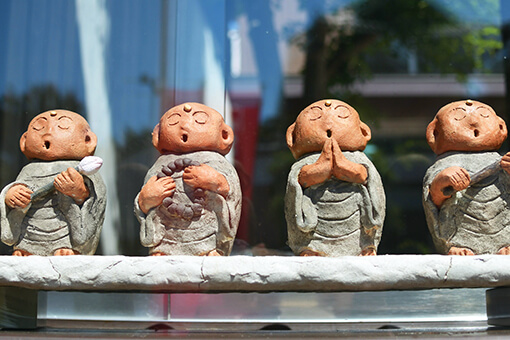Hi! It’s konkaz (@konkazuk) here.
“Personal pronoun” is featured in this blog post for those who would like to revise the area.

My focus has always been on developing my speaking skills, so I do not know much about English grammatical terminologies in Japanese, to be honest.
Therefore, here, I have given a brief summary of “personal pronouns”, which we had learnt during the years of compulsory education.
If you think that your memory of this area has become fuzzy, it will take only a few minutes to read this through, so let us just recall the meaning and the usage of some terminologies here.
What is “Personal pronoun” anyway?

Speaking of “pronouns”, what we generally associate with are, I guess, the words such as “a-re” (that) and “so-re” (it) that are used to point something instead of calling things by name.
“Personal pronouns” are the ones such as “anata” (you), “watashi” (I) and “kanojo-ra” (her) that are used when we refer to people without calling by name.
They are categorized by person and there are three types.
🔹 First person
🔹 Second person
🔹 Third person
What are “First person” and “Second person” in English?

Right.
We are going to have a look at “First person” and “Second person”.
First, imagine you are having one on one conversation with someone.
As you might have guessed, the “first person” is the speaker of the two and is generally expressed as “boku” or “ore” or “watashi” that are equivalent of “I” in English.
The “second person” is the person who is spoken to, and is expressed as “kimi” or “anata” or “omae” that are equivalent of “you” in English.
I (watashi) like you (anata).
I (watashi) hate you (anata).
I (watashi) am talking about you (anata).
And in this case, because a single human being “I” is speaking to the other single human being “you”, these are treated as “singular”, therefore they are categorized as…
I = First person singular
you = Second person singular
On the other hand, there are those personal pronouns that are used for referring to more than one person such as “jibun-tachi” or “watachi-tachi” (First person) that are equivalent of “we” in English and also “anata-tachi” (Second person) that is equivalent of “you” in English (although its form is the same as its singular one).
In this case, they are categorized as…
we = First person plural
you = Second person plural
What is “Third person” then?

The third person refers to everything other than “jibun/anata” or “jibun-tachi/anata-tachi”.
In other words,
Everything but first person & second person is categorized as “third person”.
And earlier, I mentioned that personal pronouns are used “when we refer to people”, however, when it comes to the third person, since its definition is
“Everything but first person & second person”
“animals” such as dogs and cats, “things/matters” such as tables, computers, accidents and environment and even “pronouns” such as it, that, etc. are also included.
How do personal pronouns work?

Personal pronouns can be classified into three categories which are “subjective case”, “possessive case” and “objective case” and each has got its function.
If we look at them with regard to first person singular, they are…
Subjective case “I” …is used for the subject of verbs.
Possessive case “my” …represents something that is owned and tells us who the owner is.
Objective case “me” …is used when the personal pronoun is an object that can be direct/indirect or object of prepositions.
And in addition to these three cases, there are also two more types of personal pronouns that are called “possessive pronoun” and “reflexive pronoun”.
Possessive pronoun “mine” …represents something that is owned and tells us who the owner is, and it can be used independently unlike the possessive case of personal pronouns that are followed by nouns.
Reflexive pronoun “myself” …refers back to the subject.
Below is a table showing the personal pronouns by case and person.
| Subjective Case | Possessive Case | Objective Case | Possessive Pronouns | Reflexive Pronouns | |
| First Person(singular) | I | my | me | mine | myself |
| Second Person (singular) | you | your | you | yours | yourself |
| Third Person ♂ (singular) | he | his | him | his | himself |
| Third Person ♀ (singular) | she | her | her | hers | herself |
| Third Person neutral (singular) | it | it | its | – | itself |
| First Person (plural) | we | our | us | ours | ourselves |
| Second Person (plural) | you | your | you | yours | yourselves |
| Third Person (plural) | they | their | them | theirs | themselves |
Now, let’s have a look at them one by one with example sentences.
Subjective case

🔹 First person
singular
I like your jacket.
plural
We don’t know his name.
🔹 Second person
singular
You have met Simon before, haven’t you?
plural
You are not allowed here.
🔹 Third person
singular
She will be late.
singular
What time does the show start? I’m afraid it finished a couple of hours ago.
plural
They are plotting a riot.
Possessive case

🔹 First person
singular
It’s my turn!
plural
Our daughter’s birthday is next week.
🔹 Second person
singular
What’s your name?
plural
Your team will be playing against our team from 14:00pm at C court.
🔹 Third person
singular
His beard has grown.
singular
You can’t judge a book by its cover.
plural
I like their 3rd album the best!
Objective case

🔹 First person
singular
Can you pass me the salt please?
plural
Let us know if you have any questions?
🔹 Second person
singular
I will pick you up on my way home.
plural
It will be difficult for us to find you in such a huge venue.
🔹 Third person
singular
Don’t worry. I’m sure they will catch him at some point.
singular
I’m not feeling well, so I’ll give it a pass this time.
plural
Look at them. They are coming back.
Possessive pronoun

🔹 First person + Second person (mixed)
singular
They are mine, not yours!
plural
Yours look OK, but ours are completely broken.
🔹 Third person
singular
You better ask her directly because this is actually hers.
plural
A friend of theirs is visiting their office this afternoon.
Reflexive pronoun

🔹 First person
singular
I was talking to myself.
plural
We assembled this furniture ourselves.
🔹 Second person
singular
Take good care of yourself.
plural
You must sort this out yourselves.
🔹 Third person
singular
She bought herself a yellow raincoat.
singular
The work itself was not so difficult.
plural
They didn’t know how to open the door themselves.
Summary

To summarize this time’s article…
3 types of person
“First person” ➡︎ the speaker
“Second person” ➡︎ the person who is spoken to
“Third person” ➡︎ everything including animals, things and matters but first person & second person
* Personal pronouns can be singular or plural.
Personal pronouns
➡︎ Subjective case They are used for the subject of verbs.
➡︎ Possessive case They represent something that is owned and tells us who the owner is.
➡︎ Objective case They are used when the personal pronoun is an object that can be direct/indirect or object of prepositions.
Possessive pronouns
➡︎ They represent something that is owned and tells us who the owner is, and it can be used independently unlike the possessive case of personal pronouns that are followed by nouns.
Reflexive pronouns
➡︎ They refer back to the subject.
Having the knowledge of English grammatical terminologies might not be necessary for those who can speak English to some degree because that means you have already equipped the usage of it. However it could be useful for you to have it when you are going to explain things to beginners.
Bye now.
konkaz
You can read this blog post in Japanese from the link below.
👉 英語の一人称、二人称、三人称を、もう一度こっそり確認する!《英語汁 第28号》

